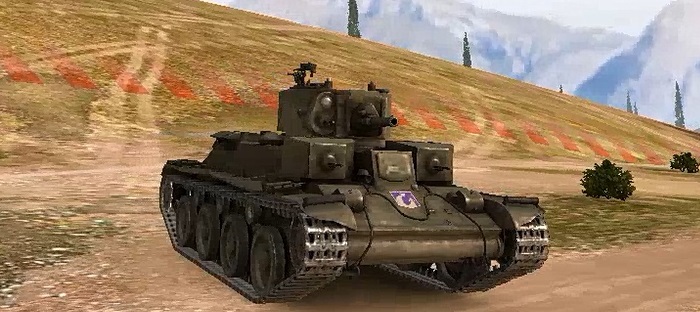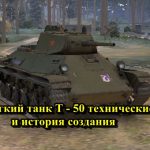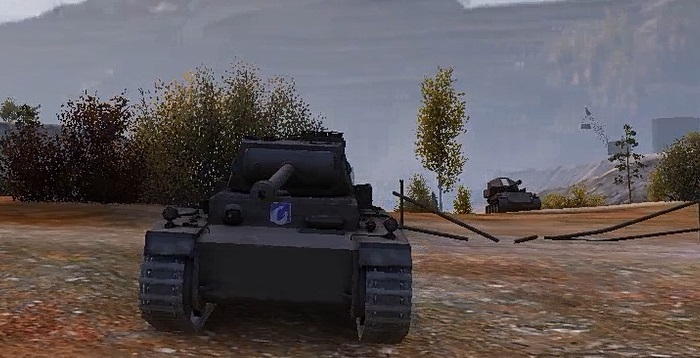The AT-1 self-propelled artillery mount was developed by the design bureau of the Spetsmashtrest Experimental Plant (Leningrad Experimental Engineering Plant No. 185 named after S. M. Kirov) on the basis of the T-26 light tank in 1935-36. and was intended to fight tanks. Two prototypes were built, armed with a tank gun PS-3, 76.2 mm caliber, tested in 1935-36. Serially not produced.

AT-1 (Artillery tank-1) – according to the classification of tanks of the mid-1930s, it belonged to the class of specially created tanks, according to modern classification it would be considered an anti-tank self-propelled artillery installation of 1935. Work on the creation of an artillery support tank based on the T-26, which received the official designation AT-1, began at factory No. 185 named after Kirov in 1934. In general terms, an attempt was made to eliminate most of the shortcomings that were inherent in SU-1. It was assumed that the created tank will replace the T-26-4, the serial production of which the Soviet industry failed to establish. The main weapon of the AT-1 was the 76.2 mm PS-3 gun, designed by P. Syachentov.

Especially for installation on tanks, a team led by Syachintov in 1930-1932. developed a completely new high-power artillery system. This artillery system was designed as a special tank gun, which was equipped with panoramic and telescopic sights and foot descent. In its power, the PS-3 gun exceeded the 76.2-mm gun mod. 1927, which was installed on the T-26-4 tanks. All work on the design of the new AT-1 tank was carried out under the leadership of P. Syachentov, who was the head of the design department for self-propelled guns of the experimental plant No. 185 named after Kirov. By the spring of 1935, 2 prototypes of this machine were produced.

The crew of the self-propelled guns consisted of 3 people: the driver, who was located in the control compartment on the right in the direction of the vehicle, the observer (who was charging), who was in the fighting compartment to the right of the gun and the gunner, which was located to his left. For landing and disembarkation of crews in the roof, two hatches were made. In addition, to improve the visibility of the terrain, accelerate the loading of ammunition and better ventilation of the fighting compartment during intensive firing from closed positions, part of the sides and stern of the deckhouse could be hinged.

The PS-3 cannon could send armor-piercing projectiles at a speed of 520 m / s, had panoramic and telescopic sights, foot descent and could be used both for direct fire and from closed positions. The angles of vertical guidance ranged from -5 to +45 degrees, horizontal guidance – 40 degrees (in both directions) without turning the ACS body.
The first copy of the AT-1 self-propelled gun was handed over for testing in April 1935. In terms of driving performance, it was no different from the T-26 serial tank. Carrying out fire tests showed that the rate of fire of the gun without correction of aiming reaches 12-15 rounds per minute with a maximum firing range of 10.5 km., Instead of the required 8 km. In contrast to the previously tested installation SU-1, firing during movement was generally successful. At the same time, shortcomings of the machine were identified that did not allow the AT-1 to be transferred to military tests.

The first copy of the AT-1 self-propelled gun was handed over for testing in April 1935. In terms of driving performance, it was no different from the T-26 serial tank. Carrying out fire tests showed that the rate of fire of the gun without correction of aiming reaches 12-15 rounds per minute with a maximum firing range of 10.5 km., Instead of the required 8 km. In contrast to the previously tested installation SU-1, firing during movement was generally successful. At the same time, shortcomings of the machine were identified that did not allow the AT-1 to be transferred to military tests.
The second instance of the AT-1 self-propelled guns suffered the same setbacks as the first. First of all, they were associated with the work of the artillery installation. In order to “save” their project, the specialists of the Kirov Plant came up with a proposal to install their own L-7 gun on the self-propelled guns. Unlike the PS-3 gun, this gun was not created from scratch, its prototype was a 76.2 mm Tarnavsky-Lender system gun, due to which the L-7 gun had similar ballistics to it.

The attempt to equip the AT-1 with this weapon did not lead to success due to a number of design features, and found it inappropriate to design a new armored tank. After a failure with the L-7 gun, the factory offered to try its improved version, which received the designation L-10. However, this weapon could not be installed in the AT-1 cabin. The situation was aggravated by the fact that Plant No. 174 was loaded with the production of serial T-26 tanks, so even the release of 10 chassis for the AT-1 self-propelled guns became an impossible task for him.
In the online game world of tanks, the Soviet anti-tank self-propelled gun AT -1 is at level 2. Available normal gun with decent damage for level 2. Not a bad speed to support and shoot from the bushes. Booking is low, but this does not interfere with firing and staying for a long time. Much depends on the team and the selected flank at the beginning of the game.








